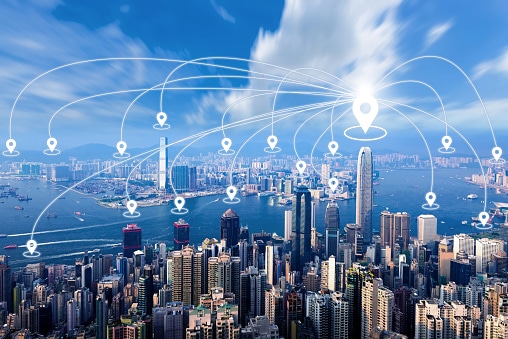During the pandemic, the Internet of Things (IoT), which is described as “software, sensors and network connectivity embedded in physical devices, buildings and other items that enable those objects to collect and exchange data and send, receive, and execute commands,” grew quickly.
Currently, there are 21.5 billion linked devices on the planet. According to the World Bank’s Findex 2021 survey, 1.4 billion persons still lack access to banking, with women making up the majority. Additionally, 850 million individuals worldwide lack any kind of ID, let alone a digital one. This offers the chance to skip ahead to a digital ID and use the IoT to conduct transactions, which would increase access to financial services and promote economic empowerment.
For instance, a new digital bank ID that meets client due diligence requirements for financial institutions employing a distinctive biometric identity has been piloted in Papua New Guinea. A total of 2,548 persons were contacted by the initiative, 47% of them were women from rural areas who had previously been unable to create a bank account. 80% of the unofficial and rural population benefit from this.
The new ID not only makes it possible for biometric identification, which facilitates access to banking, but it also increases security and makes it possible to gather information on consumer behaviour. Where there was previously no data, spending patterns can be used to determine creditworthiness, improving risk assessments and enabling tailored financial services.
While the number of internet users and mobile connections in Papua New Guinea is rising, IoT-enabled gadgets are also becoming more popular, and smart card readers and point-of-sale terminals are now being made available. Using communication technologies like Bluetooth, Near Field Communication, and Wi-Fi, payments can be completed safely and effectively. These technologies facilitate communication between wearables, contactless cards, and point-of-sale terminals.
Using communication technologies like Bluetooth, Near Field Communication, and Wi-Fi, payments can be completed safely and effectively. These technologies facilitate communication between wearables, contactless cards, and point-of-sale terminals.
Customers can spread out their payments for household items like solar panels, smartphones, refrigerators, and televisions using M-KOPA, for instance. The system’s purchase price is paid in modest installments over time after an initial deposit, up until the whole amount is paid. Once the item has been fully paid for, the data on payback rates can be utilised to resecure the asset as collateral, allowing consumers to access cash loans through M-KOPA. MiBank approaches the asset’s resale in a comparable manner.
IoT devices collect data on crop yields, soil conditions, and weather patterns in the agricultural sector, allowing financial institutions to provide farmers specialised financial services and support them in making well-informed financial decisions, such as gaining access to credit and insurance.
As technology advances, we’ll probably see even more creative use of the IoT to enhance financial services and empower people and businesses around the world. However, addressing infrastructure, capacity, standardization, and regulatory frameworks would require a comprehensive strategy. The emergence of the Internet of Things has the potential to alter financial services and open up new doors for economic development and financial inclusion. The South Asia Department’s adviser at the ADB is Lotte Schou-Zibell. Senior public management expert Arndt Husar (digital transformation).














